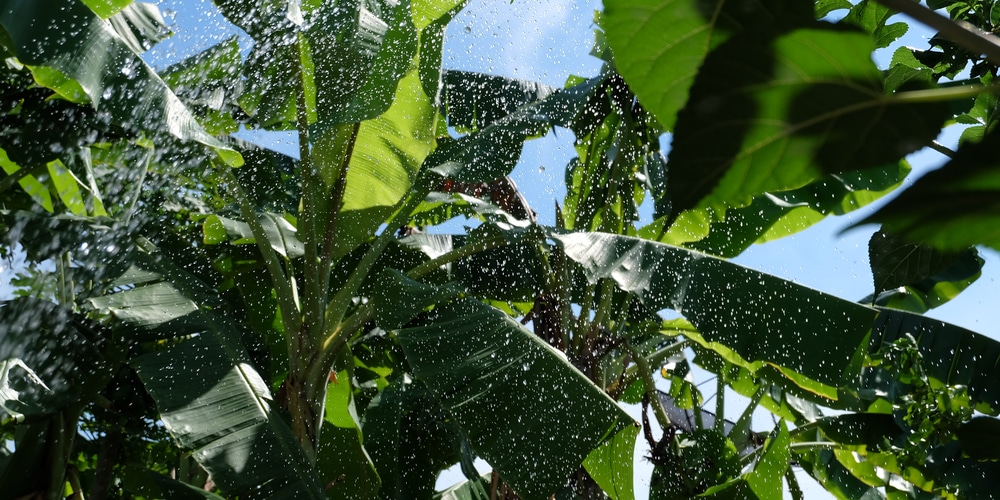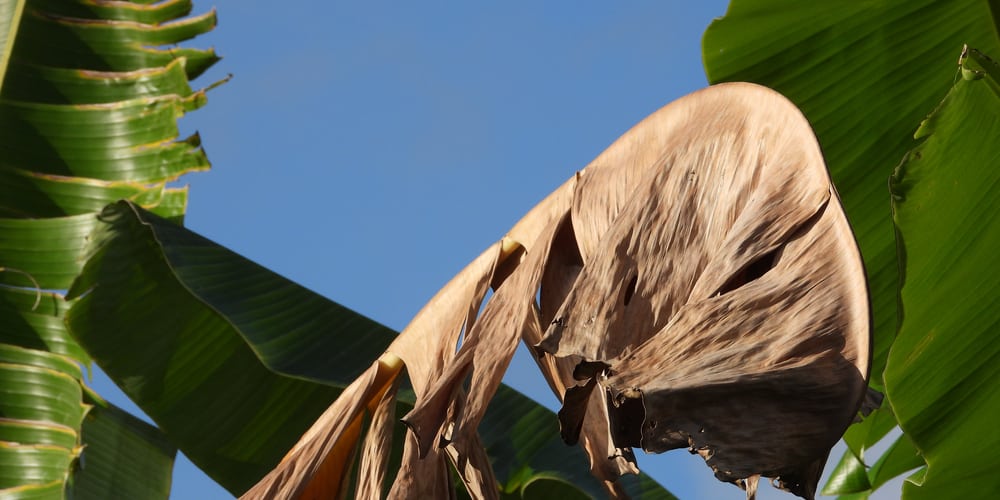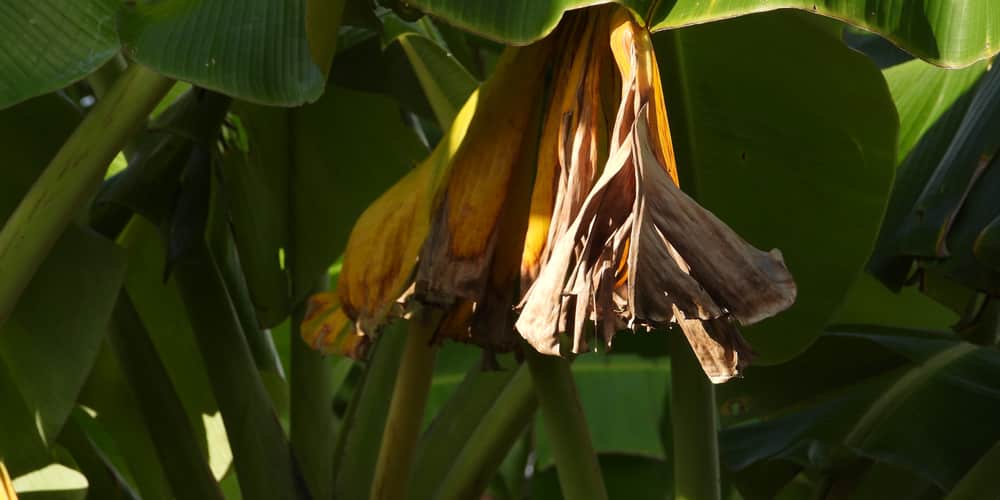The large, showy banana leaves always give off that “tropical” vibe regardless of where they are planted. Its deep green-colored leaves, towering stature, and rapid growth are all attributed thanks to its love for moisture. Yes, the banana plant is a thirsty one.
However, its love for moisture and plant growers over lovingly giving it water can often lead to the plant’s undoing. Too much of anything is never good, and the same goes for watering your banana plant. Some keep the plant indoors, which can create an even more humid environment for the plant, leading to its potential demise.
If you think your banana plant may be overwatered, here are a few things to look out for and tips on saving it.
How Much Water Does a Banana Plant Need?
Hardy in USDA zones 9-11, the banana plant is often found in warm microclimates. This means that it’s used in tropical or subtropical climates with little change in temperature and moisture.
The ideal amount of water for a banana plant is about 4-6 inches of water monthly. This is about an inch of rainwater or irrigation water per week.
When it comes to watering, remember that it’s better to underwater than overwater your plant. Although bananas love moisture as much as the next tropical plant, too much of it would cause numerous problems like yellowing of leaves, soft or mushy leaves and stems, and eventually root rot.
Root rot is a plant killer, and once it takes hold, there’s little that can be done to save your plant. This is why it’s crucial to catch overwatering early on and take steps to correct the problem.
What Are the Signs of an Overwatered Banana Plant?
There are several signs that will let you know if your banana plant is overwatered. These include:
Yellowing Leaves
This is one of the most common signs of overwatering, not just for banana plants. This is mostly true for all types of plants since yellow leaves are a sign of stress. For banana plants, you’ll notice that the lower leaves are starting or have become yellow.
If the yellowing is accompanied by wilting, then this is a sign that your plant is not only overwatered but is also suffering from root rot. This is a serious problem that can kill your plant if not treated immediately.
Softened Stem or Trunk
Frequently, you’ll notice that the stem or trunk of your plant has softened. This is because the plant can no longer support itself and is starting to collapse.
Powdery Mildew
This is a type of fungus that appears as a white or gray powder on the leaves of your plant. It’s a sure sign of overwatering since this fungus thrives in moist environments. Other mildews can also appear in different colors, such as black, brown, or yellow.
Mushy Leaves
When you touch the leaves of your plant, they should be firm. If they’re mushy to the touch, then this is a sign that they’re overwatered.
Heavy or Moldy Soil
The last sign is the condition of the soil. If it’s heavy and feels soggy, then there’s too much water. You might also notice mold or mildew on the surface of the soil. Again, the mold formation is an indication of too much moisture.
What Can You Do to Save an Overwatered Banana Plant?
If you think that your banana plant is overwatered, then the first thing you need to do is stop watering immediately. Let the plant dry out and see if it recovers.
If you’ve noticed that your soil is waterlogged, you can then repot the plant in dry soil. Give the plant a bit of moisture, but ensure that the soil is well-drained to avoid overwatering.
It’s also important to check the drainage of your pot. Indoor banana plants (those kept in a pot) are especially susceptible to overwatering since they’re often placed in humid rooms. Ensure that your soil stays moist but has a good drainage system so your plant won’t sit in water.
For worst-case scenarios, when the rot has already reached the plant’s trunk, you can try to cut off the affected parts. Closely inspect the plant and cut off any mushy or blackened parts. Is it soft to the touch? If so, then it’s probably rotten and needs to be cut off.
You can then replant the healthy parts of the plant in new soil. Make sure that none of the affected parts are left behind, as this would only spread the rot. Remember to water it sparingly and keep an eye out for any signs of overwatering.
Overwatered Banana Plant: Final Thoughts
Often, a little bit of overwatering can still help save your banana plant. As soon as you catch the early signs, ensure that you do everything you can to correct these problems ASAP.
Once the roots have started to rot, affecting the plant’s trunk and stems, your last resort would be to cut off the affected parts and replant the healthy ones.


